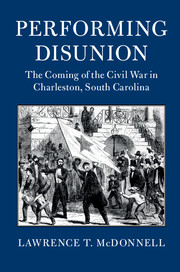1 - Envisioning Charleston
from CONTEXT: THE CITADEL BESIEGED
Published online by Cambridge University Press: 08 June 2018
Summary
Charleston was established in 1680 at its present site, the tip of the low, sandy peninsula where, as natives say, the Ashley and Cooper Rivers meet to form the Atlantic Ocean. It has always been that kind of place. The unplanned offspring of a risky commercial venture launched by the Earl of Shaftesbury and assorted partners, the city prospered quickly. By the 1720s, plantation agriculture was flourishing in the hinterland, and a lucrative deerskin trade yielded to still more profitable commerce in rice, indigo, timber, and slaves. The region's warm, wet climate made it “the pisspot of the World” for at least one colonist, but the same winds and currents that brought annoying rain showered welcome trade on the town.
Then as now, Charleston was preeminently a “sea- drinking” city. For ships carrying European wares or African slaves to the West Indies, the quickest route of return eastward meant following the Gulf Stream north and catching trade winds off the Carolina coast. Charleston merchants capitalized on that imperative, scooping up unsold goods at bargain prices and marketing the colony's crops as cargo for the voyage back. Local artisans refurbished ships, grocers stocked them with provisions, and taverns amused their crews. On this basis, a proud culture of parvenu aristocrats gained the wherewithal to deny its grubby origins. Soon the sons of former traders and slave drivers were sneering at rural rabble and urban moneychangers alike. By 1800, with the first cotton crops trundling down the new State Road to swell the profits of trade, Charleston was the fifth largest city in the United States, numbering 8,800 whites, 950 free blacks, and more than 9,000 slaves collected in four wards. Shaftesbury's gamble had paid off handsomely.
But the decades to come saw the city's star wane. Other cities simply did better, grew faster. In time, for elite Charleston, the nineteenth century came to seem a great ghastly error. Culturally, the gentry's achievement toppled into excess. John C. Calhoun himself claimed in 1807 that the fires and epidemics that plagued Charlestonians were signs of God's “curse for their intemperance and debaucheries.”
- Type
- Chapter
- Information
- Performing DisunionThe Coming of the Civil War in Charleston, South Carolina, pp. 23 - 32Publisher: Cambridge University PressPrint publication year: 2018



